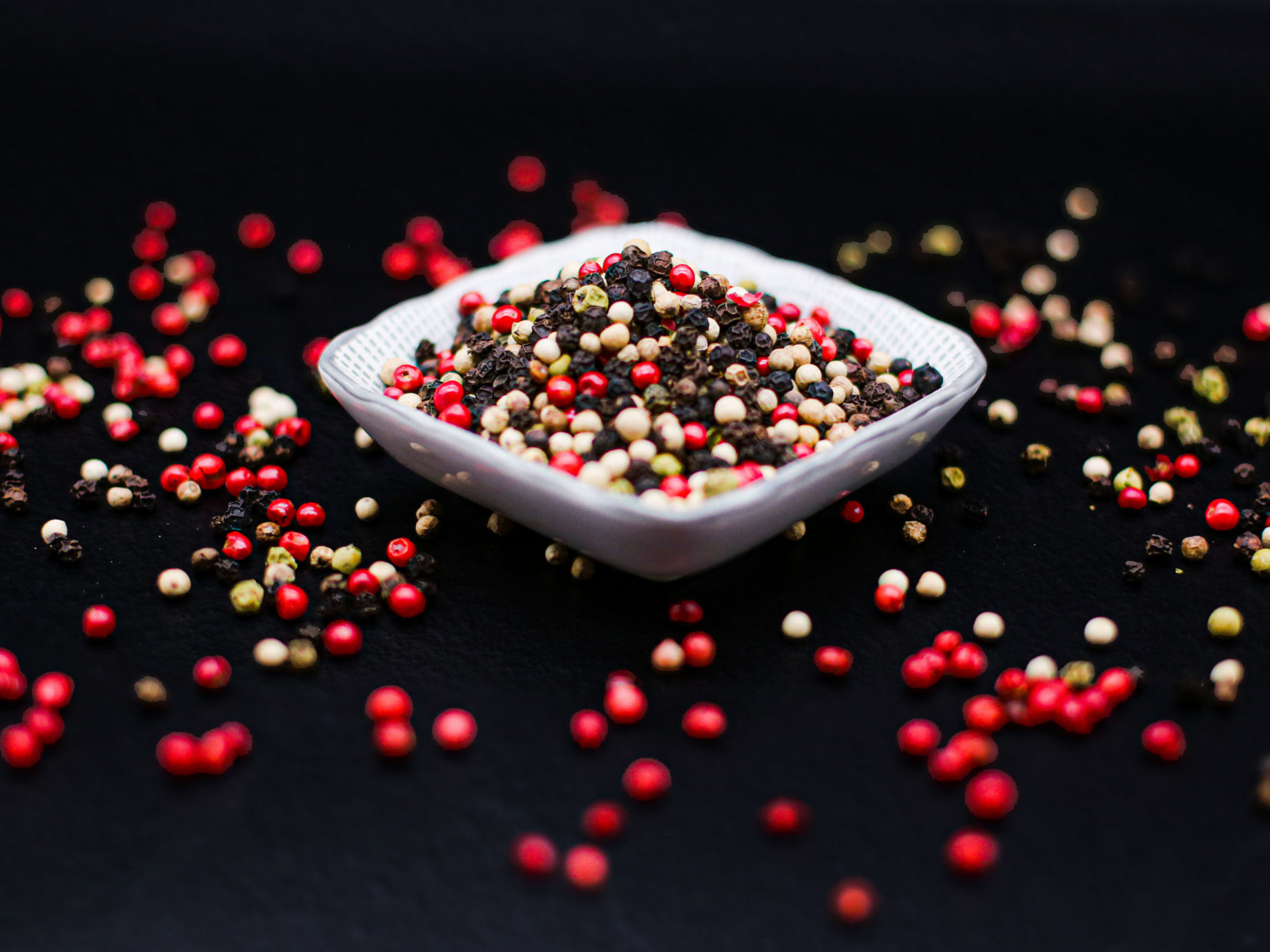Black pepper is arguably the most abundant spice that’s grown across the most famous spice’s regions: from Vietnam and India to Brazil. Throughout history this spice alone has had a significant impact shaping the world: Europeans once valued it so much that it was used as a means of influencing other people with gifts, bribes, ransoms. Even taxes were paid with pepper. During the Middle Ages, tiny peppercorns were luxury items, affordable only to the wealthy. Italy held the monopoly on the pepper trade at that time which spurred the Portuguese, the Dutch and the Englishmen to start seeking a sea route to the distant places, like India, in order to intercept control over the spice trading. Such voyages increased pepper supplies into Europe, and the prices eventually declined. That made the spice, once available only for the elites, become more of an everyday food seasoning affordable to the masses.
Today we got used to it to the extent where we simply stopped recognizing its beauty and character. So let’s look at it closer. What is black pepper? It’s a flowering vine cultivated for its fruit, that we know as peppercorns, which are dried and used as a spice. But processed peppercorns come in a variety of different colours. When fully ripe, peppercorns, like the majority of other fruits, become red. They can be preserved in brine or vinegar or dried. If we want to get white pepper, we will need to soak ripe drupes for about a week. During this stage, the outer skins peppercorn soften, decompose and later are removed, revealing the body of the fruit which is then dried. Such pepper is the great addition to the popular white sauces, like bechamel, or mashed potatoes. Cooks often use this spice when they want to add a peppery bite without altering the appearances of the dish with black flecks.
However, we can make use of unripe fruits: dry (or freeze-dry), can brine them – these applications help retain the green colour. Treated like this, peppercorns will be brighter in aroma, more grassy and fresh. As for the black pepper, it’s also produced from still-green unripe drupes: they are briefly blanched in hot water (that accelerates browning reactions) and can be dried in the sun. During this stage, the skin shrinks and darkens even further. There are quite a few different black pepper varieties that are enjoyed by true connoisseurs around the world. The famous intense lampong from Indonesia with bright and light aroma, citrusy tellicherry form India with a nice balance of heat or pungent talamanca from Ecuador with a bitter aftertaste. Choose wisely but don’t forget that once ground, pepper loses its aromatic volatile compounds quite quickly. That’s why many culinary experts suggest that we buy a pepper mill to mechanically grind the whole peppercorns right onto the plates.











What do you think?